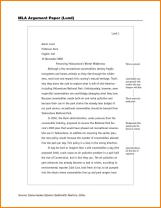How to write a good fiction?
Writing engaging fiction involves a combination of creativity, storytelling techniques, and attention to detail. Here are some tips to help you craft compelling fiction:
Develop Strong Characters:
- Create well-rounded and relatable characters with distinct personalities, motivations, and conflicts. Readers connect with characters that feel authentic and have depth.
Establish a Vivid Setting:
- Describe the setting in detail to immerse readers in the world of your story. Use sensory details to evoke a strong sense of place and atmosphere.
Build a Compelling Plot:
- Craft a plot with a clear structure, including an introduction, rising action, climax, falling action, and resolution. Develop conflict and tension to keep readers engaged.
Show, Don't Tell:
- Use descriptive language and vivid imagery to show scenes and emotions rather than simply telling the reader. This allows for a more immersive experience.
Create Dialogue that Flows:
- Write natural-sounding dialogue that reflects the characters' personalities and advances the plot. Pay attention to rhythm, pacing, and the unique voices of your characters.
Maintain Consistent Tone and Style:
- Establish a consistent tone and writing style that complements the genre and atmosphere of your story. Consistency helps create a cohesive reading experience.
Pace Your Story Effectively:
- Control the pace of your narrative to maintain tension and keep readers hooked. Vary the pacing to match the intensity of different scenes.
Build Suspense and Anticipation:
- Introduce elements of mystery, conflict, or unanswered questions to build suspense. Keep readers curious and eager to discover what happens next.
Edit and Revise:
- After finishing a draft, revise and edit your work. Check for clarity, eliminate unnecessary details, and ensure the narrative flows smoothly.
Seek Feedback:
- Share your work with beta readers, writing groups, or trusted friends. Constructive feedback can provide valuable insights and help you identify areas for improvement.
Read Widely:
- Read a diverse range of fiction to expose yourself to different writing styles, genres, and storytelling techniques. Analyze what works well in other authors' works.
Stay True to Your Voice:
- Develop your unique writing voice. Don't be afraid to experiment, but ultimately, let your own style and personality shine through in your writing.
Remember that writing is a skill that improves with practice. Be patient, stay passionate about your story, and continue refining your craft over time.
Techniques for crafting compelling fiction writing
Captivating fiction isn't just about plot points and characters; it's about weaving them together into a tapestry that sparks emotions, keeps readers turning pages, and leaves a lasting impression. Here are some techniques to craft compelling fiction writing:
1. Hook from the Start:
- Grab attention within the first few lines: Throw readers into the action, introduce a captivating mystery, or pose a thought-provoking question.
- Set the tone and establish stakes: Let readers know what kind of story they're in, what's at risk, and why they should care.
2. Develop Engaging Characters:
- Go beyond archetypes: Create characters with flaws, vulnerabilities, and unique motivations. Make them relatable and evoke empathy.
- Show, don't tell: Reveal personality through actions, dialogue, and internal thoughts rather than direct descriptions.
- Let characters drive the plot: Their goals, desires, and conflicts should push the story forward.
3. Build a Vivid World:
- Craft sensory details: Paint pictures with words, so readers can smell the salty air, feel the cold blade in their hand, or hear the raindrops whisper on the roof.
- Establish internal logic and rules: Whether it's a fantastical world or a realistic setting, ensure it has consistency and believable consequences.
- Use setting to enhance the story: Make it an active participant, influencing characters' moods, decisions, and the overall atmosphere.
4. Master the Art of Storytelling:
- Structure your narrative effectively: Employ plot devices like the hero's journey, rising action, and cliffhangers to keep readers engaged.
- Balance exposition with action and dialogue: Provide enough context without bogging down the story.
- Create tension and suspense: Plant seeds of doubt, introduce unexpected twists, and raise the stakes for your characters.
5. Embrace the Power of Language:
- Choose your words carefully: Opt for precise, evocative language that paints vivid pictures and resonates with your reader's emotions.
- Vary your sentence structure: Experiment with rhythm and flow to avoid monotony and create emphasis when needed.
- Incorporate figurative language: Use metaphors, similes, and other figures of speech to add depth and texture to your writing.
Remember:
- Read voraciously: Immerse yourself in stories you love and analyze what makes them work.
- Practice makes perfect: Write regularly, revise relentlessly, and seek feedback from trusted readers.
- Stay true to your voice: Don't try to imitate others; your unique perspective is your greatest asset.
By using these techniques and letting your creativity flourish, you can craft compelling fiction that resonates with readers long after they've reached the final page.











